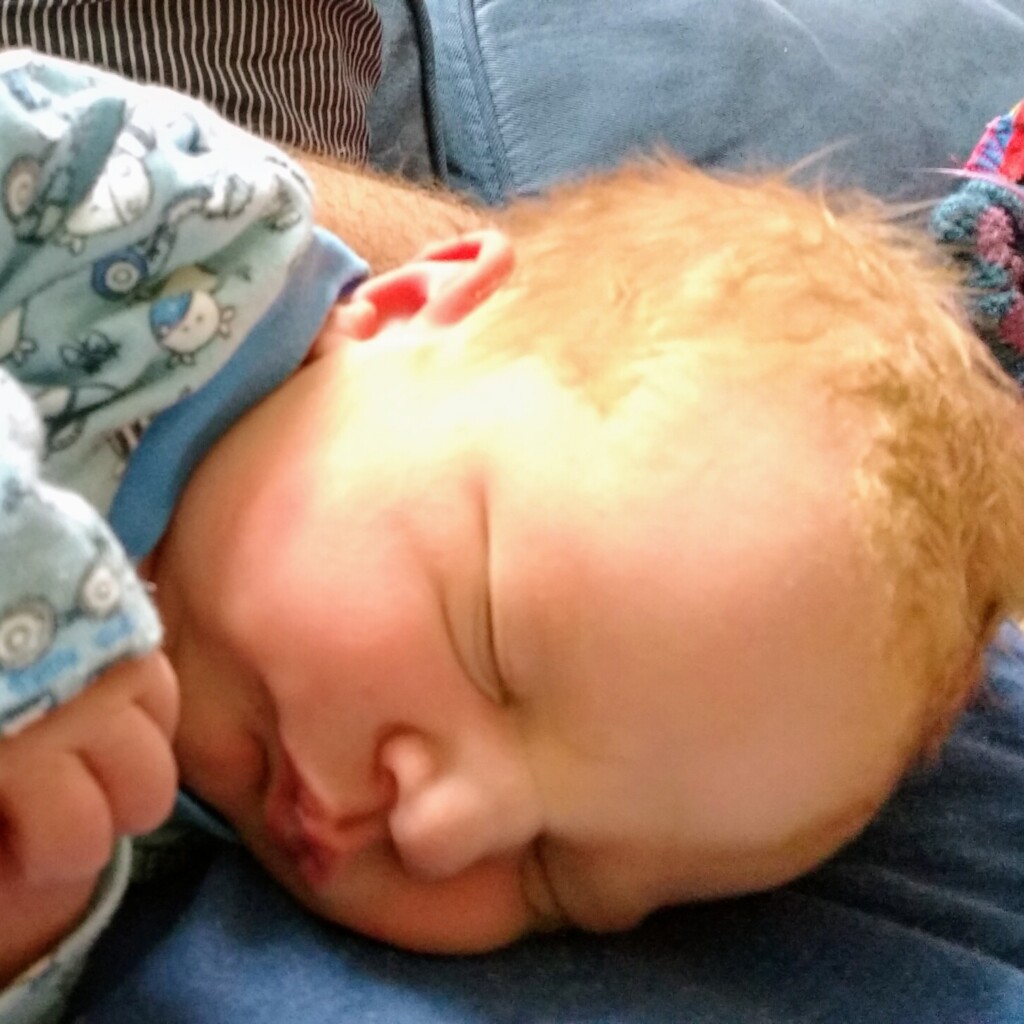
You’re home with your brand new baby. You’ve got a sling ready (if you’re not sure yet have a look at our suggestions for newborns), but how soon can you carry your baby in a sling after birth?
I am going to make some assumptions in this article. Firstly, that your baby was born at term or near to term. Secondly, that neither you or your baby has any additional health needs which might affect carrying. Finally, that you’re only carrying one baby. If any of these aren’t true then this may affect how soon you can use a sling. In that case consider getting in touch if you need more support. We can help with carrying in less straightforward scenarios; one-to-one support can ensure we take into account all of your needs.
I’m also assuming that you haven’t had a caesarean birth, as that can present additional challenges. This blog will still have relevant advice for you. However, we have written specifically about carrying after a caesarean birth which you may want to read too!
How soon can I use a sling to carry my baby after birth?
You can use a sling to carry your baby as soon after birth as you feel able to. When this is will vary from person to person; it could be the day you give birth or it could be several weeks later.

Your body has just done a lot of hard work growing and birthing a baby, and will be tired. Often you will have some amount of physical damage, be it tearing or episiotomy, a separation of the abdominal muscles known as diastatsis recti, or pelvic floor or prolapse issues. Even with no physical damage to your body, you may have discomfort from the work of labour and birth. Only you will know how your body is feeling and what you feel up to doing.
If you feel able to carry your baby in your arms, then you’re likely to be able to carry your baby in a sling/carrier.
How long can I use a sling for?

Again this will vary from person to person. You can carry for as long as you feel comfortable. However, be very aware of your body. After birth your body can tire very quickly and you can feel fine one moment and exhausted the next. I carried throughout my second pregnancy so was used to carrying both my bump and an almost 2 year old. However when I carried my little newborn 3 days after birth I was surprised how quickly I tired from the exertion. He weighed even less than my bump had!
Having a carrier can make it tempting to carry on with your life as much as possible. However, it is important to remember that your body is going through a lot of physical changes, which can mask some of the signs of strain. Take it slow, keep things short to start with, and keep listening to your body.
Carrying: building up after birth
A good way to begin might be to start carrying for short periods, and work up to longer periods slowly. Carry your baby around the house, up and down stairs or for short walks. If you can then go for walk when someone else is around; then you have an alternative if you do get tired. Over a fairly short period you are likely find that the length of time you feel comfortable carrying for grows longer.
What carrier is best after birth?
As ever when I answer this question – there is not a single ‘best‘ option. The range of slings and carriers which suit from newborn is now huge.

However, particularly if you’ve had a long or complicated birth you may find that a sling or carrier which positions your baby high on your chest and keeps them held securely to your body will likely help with your posture and the strain on core muscles. A loose sling poses a risk to the baby of slumping, but also encourages you to hold yourself in an unnatural position pulling your shoulders back to pull your baby into your body. This can create pain in your back and cause you to bear down on your pelvic floor, the opposite to the ideal of engaging the pelvic floor, a set of muscles that are impacted and stretched during pregnancy regardless of the delivery you had. Different people will find different options work well for this so it is worth having a look at the options available.
Here are some of our recommendations for slings for newborns.
Getting support with a sling
If you are finding carrying is hurting, then stop. You need to look after your body. If you can, find support from someone who can help with checking the fit of your carrier. You can book a chat with us on the phone or via video, or you can find local sling support too.
If you have ANY concerns about your body and the effects of birth, please contact your health care providers. Many women suffer in silence for a range of issues but support is available. In particular a referral to a specialist women’s health physio can be a valuable option for many.
Recommend0 recommendationsPublished in Carrying safely, Parents & families, Post-natal period, Sling choice & fit


Responses